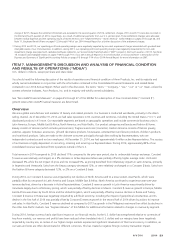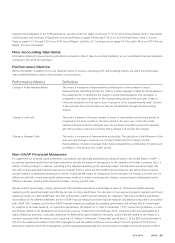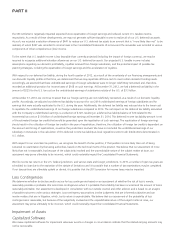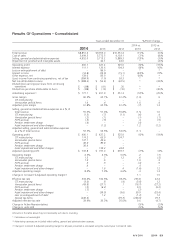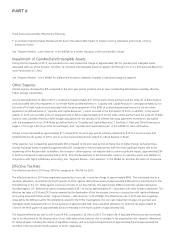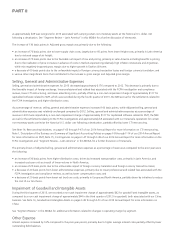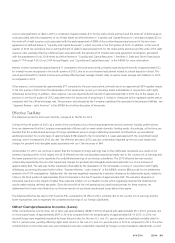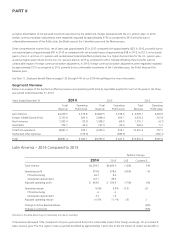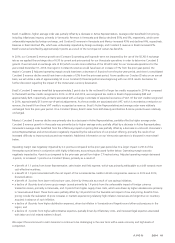Avon 2014 Annual Report Download - page 40
Download and view the complete annual report
Please find page 40 of the 2014 Avon annual report below. You can navigate through the pages in the report by either clicking on the pages listed below, or by using the keyword search tool below to find specific information within the annual report.
PART II
China, we forecasted revenue and the resulting cash flows over ten years using a DCF model which included a terminal value at the end of
the projection period. We believed that a ten-year period was a reasonable amount of time in order to return China’s cash flows to
normalized, sustainable levels.
See Note 16, Goodwill and Intangible Assets on pages F-49 through F-51 of our 2014 Annual Report for more information on China.
Silpada
During the 2012 year-end close process, our analysis of the Silpada business indicated an impairment as the carrying value of the business
exceeded the estimated fair value and the finite-lived intangible assets were not recoverable. This was primarily the result of the lower than
expected financial performance for 2012, which served as a baseline for the long-term projections of the business. We lowered our long-
term revenue and earnings projections for Silpada to reflect a more moderate recovery of the business, which was believed to be appropriate
due to the lack of sales momentum in the business and the continued inability of Silpada to achieve our financial performance expectations.
Accordingly, a non-cash impairment charge of $209 was recorded to reduce the carrying amounts of goodwill, an indefinite-lived intangible
asset and a finite-lived intangible asset. The decline in the fair values of the Silpada assets was driven by the reduction in the forecasted
growth rates and cash flows used to estimate their respective fair values.
Key assumptions used in measuring the fair value of Silpada during this impairment assessment included the discount rate (based on the
estimated weighted-average cost of capital) and revenue growth, as well as silver prices and Representative growth and activity rates. To
estimate the fair value of Silpada, we forecasted revenue and the resulting cash flows over ten years using a DCF model which included a
terminal value at the end of the projection period. We believed that a ten-year period was a reasonable amount of time in order to return
Silpada’s cash flows to normalized, sustainable levels. The fair value of Silpada’s indefinite-lived trademark was determined using a risk-
adjusted DCF model under the relief-from-royalty method. The royalty rate used was based on a consideration of market rates. The fair value
of the Silpada finite-lived customer relationships was determined using a DCF model under the multi-period excess earnings method.
The impact of the impairment charge in 2012 associated with Silpada is reflected within Discontinued Operations. There is no risk of
additional impairments associated with Silpada as the business was sold in July 2013. See Note 3, Discontinued Operations on pages F-15
through F-16 of our 2014 Annual Report for more information on Silpada.



